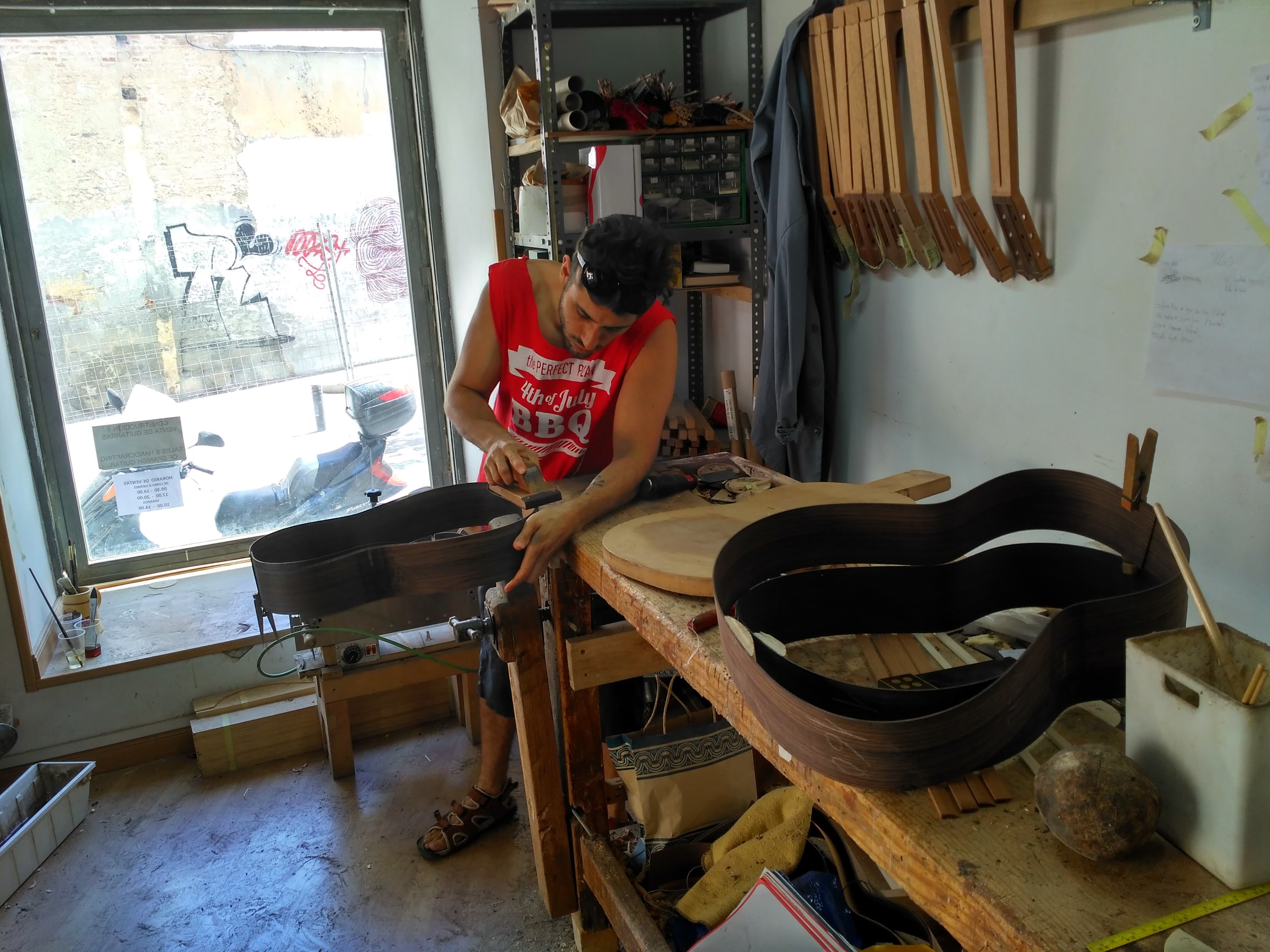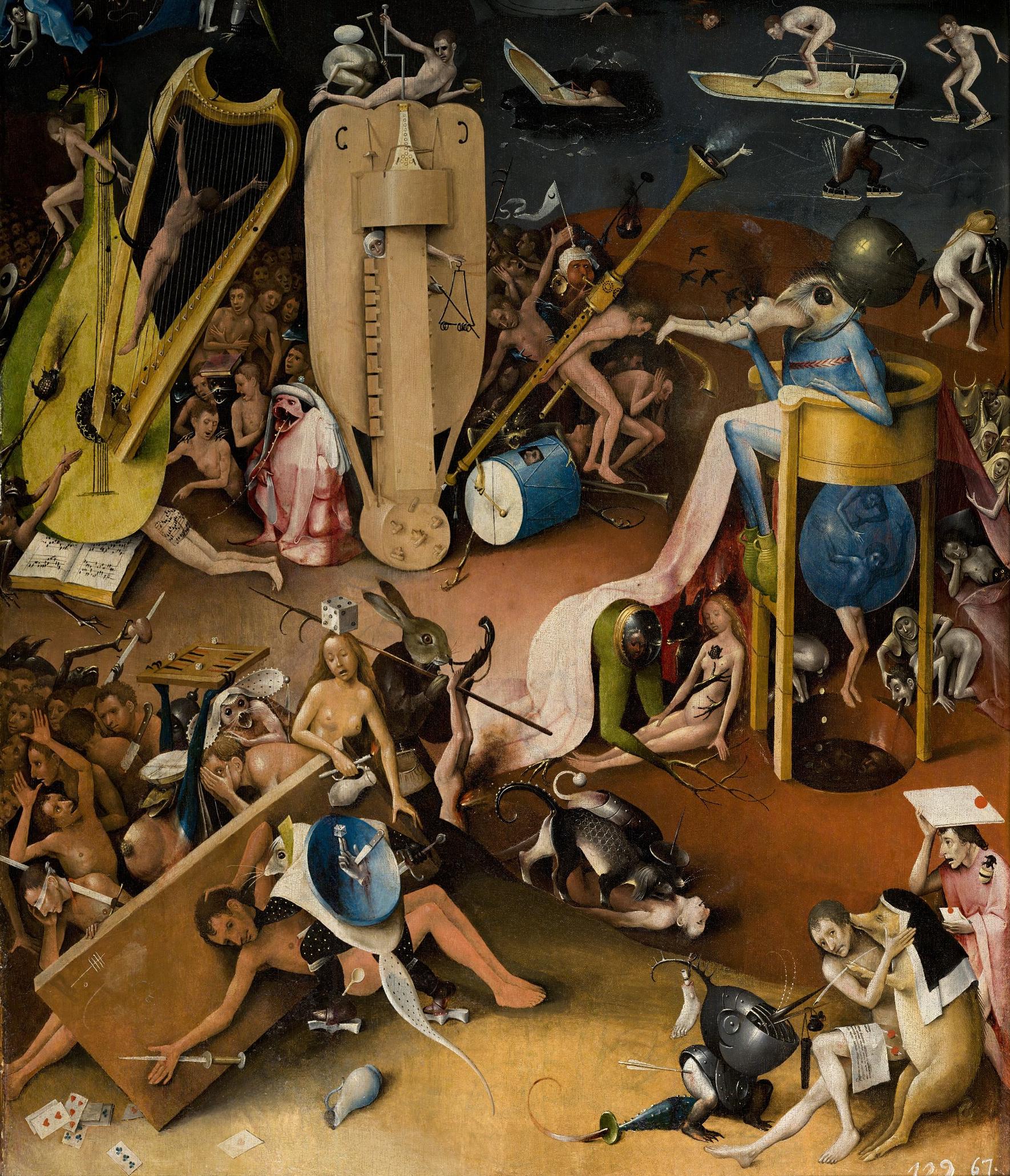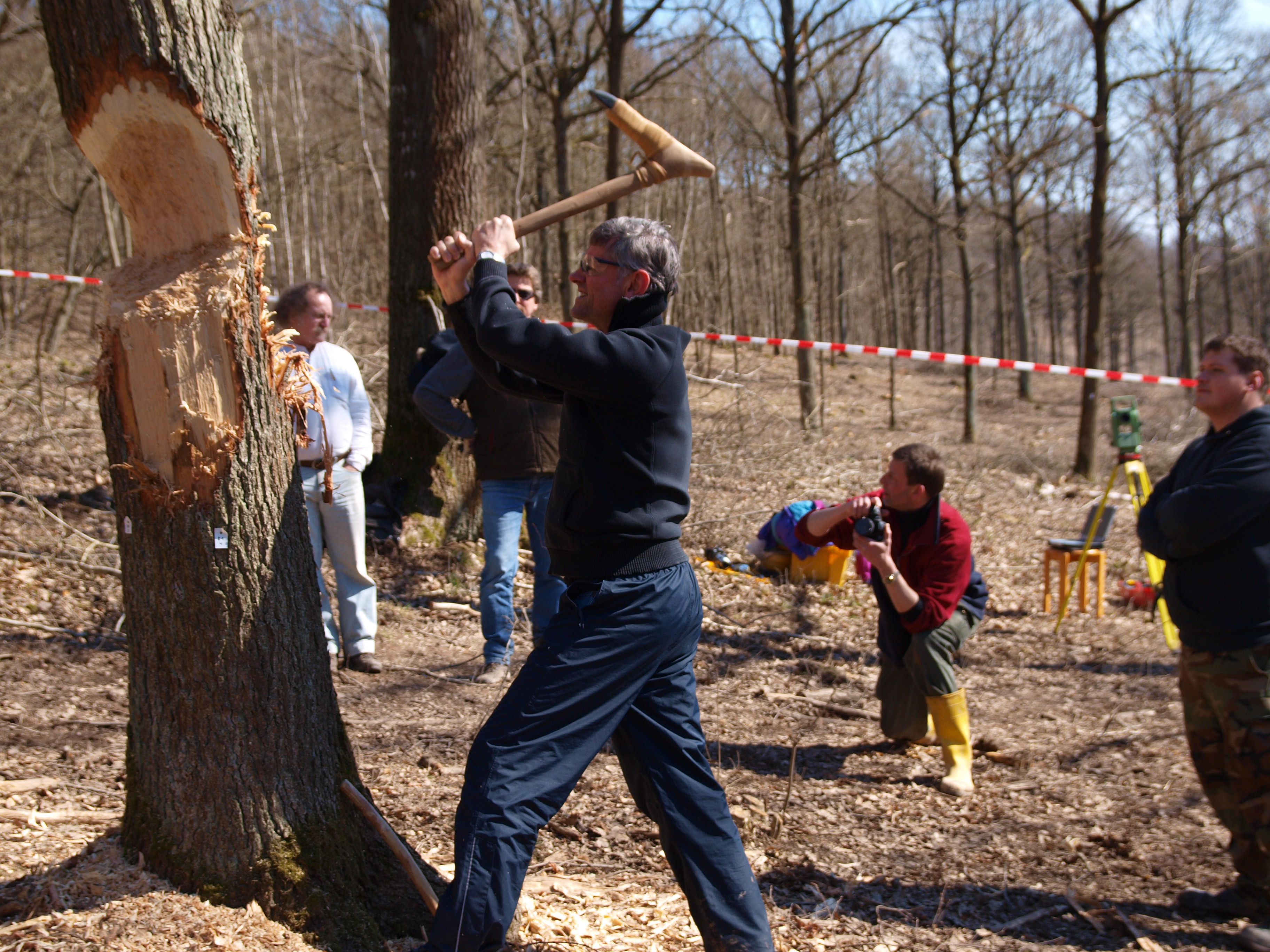|
Nyckelharpa
''Nyckelharpa'' (, roughly "keyed fiddle" in Swedish language, Swedish, , plural: ) is a "keyed" Bowed string instrument, bowed chordophone, primarily originating from Sweden in its modern form, but with its historical roots scattered across medieval Europe. It is similar in appearance to a fiddle or Violin family, violin but larger (in its earlier forms essentially a modified vielle), which employs key-actuated tangents along the neck to change the pitch during play, much like a hurdy-gurdy. The keys slide under the strings, with the tangents set perpendicularly to the keys, reaching above the strings. Upon key-actuation, the tangent is pressed to meet the corresponding string, much like a fret, shortening its vibrating length to that point, changing the pitch of the string. It is primarily played underarm, suspended from the shoulder using a Sling (firearms), sling, with the bow in the overhanging arm. The origin of the instrument is unknown, but its historical foothold and mod ... [...More Info...] [...Related Items...] OR: [Wikipedia] [Google] [Baidu] |
Luthier
A luthier ( ; ) is a craftsperson who builds or repairs string instruments. Etymology The word ' is originally French and comes from ''luth'', the French word for "lute". The term was originally used for makers of lutes, but it came to be used in French for makers of most bowed and plucked stringed instruments such as members of the violin family (including violas, cellos, and double basses) and guitars. Luthiers, however, do not make harps or pianos; these require different skills and construction methods because their strings are secured to a frame. Craft The craft of luthiers, lutherie (rarely called "luthiery", but this often refers to stringed instruments other than those in the violin family), is commonly divided into the two main categories of makers of stringed instruments that are plucked or strummed and makers of stringed instruments that are bowed. Since bowed instruments require a bow, the second category includes a subtype known as a bow maker or archetier ... [...More Info...] [...Related Items...] OR: [Wikipedia] [Google] [Baidu] |
Swedish Folk Music
Swedish folk music is a genre of music based largely on folkloric collection work that began in the early 19th century in Sweden. The primary instrument of Swedish folk music is the fiddle. Another common instrument, unique to Swedish traditions, is the nyckelharpa. Most Swedish instrumental folk music is dance music; the signature music and dance form within Swedish folk music is the polska. Vocal and instrumental traditions in Sweden have tended to share tunes historically, though they have been performed separately. Beginning with the folk music revival of the 1970s, vocalists and instrumentalists have also begun to perform together in folk music ensembles. History The history of Swedish folk music collection began with the formation of an organization called the Gothic Society ( ''Götiska Förbundet'') in 1811, shortly after the establishment of Sweden as a modern constitutional monarchy in 1809. The first published transcription of a Swedish folk tune came out ... [...More Info...] [...Related Items...] OR: [Wikipedia] [Google] [Baidu] |
Hurdy-gurdy
The hurdy-gurdy is a string instrument that produces sound by a hand-turned crank, rosined wheel rubbing against the strings. The wheel functions much like a violin (or nyckelharpa) bow, and single notes played on the instrument sound similar to those of a violin. Melodies are played on a musical keyboard, keyboard that presses ''tangents''—small wedges, typically made of wood or metal—against one or more of the strings to change their pitch. Like most other acoustic stringed instruments, it has a sound board (music), sound board and hollow cavity to make the vibration of the strings audible. Most hurdy-gurdies have multiple drone (music), drone strings, which give a constant pitch accompaniment to the melody, resulting in a sound similar to that of bagpipes. For this reason, the hurdy-gurdy is often used interchangeably or along with bagpipes. It is mostly used in Occitan folk music, Occitan, Music of Aragon, Aragonese, Cajun music, Cajun French, Music of Galicia, Cantabri ... [...More Info...] [...Related Items...] OR: [Wikipedia] [Google] [Baidu] |
Folk Instrument
A folk instrument is a traditional musical instrument that has remained largely restricted to traditional folk music, and is not usually used in the classical music or other elite and formal musical genres of the culture concerned, though related instruments may be. It can be made from wood, metal or other material; all the major families of instruments are represented. The instruments can be percussion instruments, or different types of flutes or trumpets, or string instruments that are plucked, hammered or use a form of bow. Some instruments are referred to as folk instruments because they commonly appear in folk music, even though they are also used in other types of music; for example, the classical violin and the folk fiddle are usually identical. List of folk instruments *accordion * alboka * angklung *appalachian dulcimer * autoharp *bağlama *bagpipe *balalaika * bandura *banjo *bass *binioù kozh * birimbau *bodhrán * bombard * bouzouki & Irish bouzouki * brommto ... [...More Info...] [...Related Items...] OR: [Wikipedia] [Google] [Baidu] |
Fiddle
A fiddle is a Bow (music), bowed String instrument, string musical instrument, most often a violin or a bass. It is a colloquial term for the violin, used by players in all genres, including European classical music, classical music. Although in many cases violins and fiddles are essentially synonymous, the style of the music played may determine specific construction differences between fiddles and classical violins. For example, fiddles may optionally be set up with a Violin construction and mechanics#Bridge, bridge with a flatter arch to reduce the range of bow-arm motion needed for techniques such as the double shuffle, a form of bariolage involving rapid alternation between pairs of adjacent strings. To produce a Timbre#Brightness, ''brighter'' tone than the deep tones of gut or synthetic core strings, fiddlers often use steel strings. The fiddle is part of many traditional (Folk music, folk) styles, which are typically Music#Oral and aural tradition, aural traditions— ... [...More Info...] [...Related Items...] OR: [Wikipedia] [Google] [Baidu] |
Hurdy-gurdy
The hurdy-gurdy is a string instrument that produces sound by a hand-turned crank, rosined wheel rubbing against the strings. The wheel functions much like a violin (or nyckelharpa) bow, and single notes played on the instrument sound similar to those of a violin. Melodies are played on a musical keyboard, keyboard that presses ''tangents''—small wedges, typically made of wood or metal—against one or more of the strings to change their pitch. Like most other acoustic stringed instruments, it has a sound board (music), sound board and hollow cavity to make the vibration of the strings audible. Most hurdy-gurdies have multiple drone (music), drone strings, which give a constant pitch accompaniment to the melody, resulting in a sound similar to that of bagpipes. For this reason, the hurdy-gurdy is often used interchangeably or along with bagpipes. It is mostly used in Occitan folk music, Occitan, Music of Aragon, Aragonese, Cajun music, Cajun French, Music of Galicia, Cantabri ... [...More Info...] [...Related Items...] OR: [Wikipedia] [Google] [Baidu] |
Tagelharpa
The talharpa, also known as a tagelharpa (tail-hair harp), hiiu kannel (originally hiiurootsi (which meant Vormsi island located on the halfway to Hiiumaa) Kannel (instrument), kannel) or stråkharpa (bowed harp), is a two to four stringed bowed lyre from northern Europe. It is questionable whether it was formerly common and widespread in Scandinavia. Historically, it has been played in the Estonian-Swedish areas and in Western Estonia, particularly among Estonian Swedes who came to Estonia around the 10th century from the Swedish part of Finland; they likely brought the instrument with them (later Swedish settlers in Estonia did not know nor use the talharpa.) It is similar to the Finnish jouhikko and the Welsh crwth. Jouhikko, a close relative of talharpa, is still known in Finland. The name ''talharpa'' probably comes from a dialectical form of the word "tagel" – horsehair – from which the strings were made. Background The earliest known Norse literary mentions of a harp ... [...More Info...] [...Related Items...] OR: [Wikipedia] [Google] [Baidu] |
Folk Instrument
A folk instrument is a traditional musical instrument that has remained largely restricted to traditional folk music, and is not usually used in the classical music or other elite and formal musical genres of the culture concerned, though related instruments may be. It can be made from wood, metal or other material; all the major families of instruments are represented. The instruments can be percussion instruments, or different types of flutes or trumpets, or string instruments that are plucked, hammered or use a form of bow. Some instruments are referred to as folk instruments because they commonly appear in folk music, even though they are also used in other types of music; for example, the classical violin and the folk fiddle are usually identical. List of folk instruments *accordion * alboka * angklung *appalachian dulcimer * autoharp *bağlama *bagpipe *balalaika * bandura *banjo *bass *binioù kozh * birimbau *bodhrán * bombard * bouzouki & Irish bouzouki * brommto ... [...More Info...] [...Related Items...] OR: [Wikipedia] [Google] [Baidu] |
Reconstructional Archaeology
Experimental archaeology (also called experiment archaeology) is a field of study which attempts to generate and test archaeological hypotheses, usually by replicating or approximating the feasibility of ancient cultures performing various tasks or feats. It employs a number of methods, techniques, analyses, and approaches, based upon archaeological source material such as ancient structures or artifacts. It is distinct from uses of primitive technology without any concern for archaeological or historical study. Living history and historical reenactment, which are generally undertaken as hobbies, are non-archaeological counterparts of this academic discipline. One of the main forms of experimental archaeology is the creation of copies of historical structures using only historically accurate technologies. This is sometimes known as reconstruction archaeology or reconstructional archaeology; however, reconstruction implies an exact replica of the past, when it is in fact just on ... [...More Info...] [...Related Items...] OR: [Wikipedia] [Google] [Baidu] |
Lyre
The lyre () (from Greek λύρα and Latin ''lyra)'' is a string instrument, stringed musical instrument that is classified by Hornbostel–Sachs as a member of the History of lute-family instruments, lute family of instruments. In organology, a lyre is considered a yoke lute, since it is a lute in which the strings are attached to a yoke that lies in the same plane as the sound table, and consists of two arms and a crossbar. The lyre has its origins in ancient history. Lyres were used in several ancient cultures surrounding the Mediterranean Sea. The earliest known examples of the lyre have been recovered at archeological sites that date to c. 2700 BCE in Mesopotamia. The oldest lyres from the Fertile Crescent are known as the eastern lyres and are distinguished from other ancient lyres by their flat base. They have been found at archaeological sites in Egypt, Syria, Anatolia, and the Levant. In a discussion of the Nubian lyre, Carl Engel notes that modern Egyptians call it ... [...More Info...] [...Related Items...] OR: [Wikipedia] [Google] [Baidu] |
Bowed String Instrument
Bowed string instruments are a subcategory of string instruments that are played by a bow (music), bow rubbing the string (music), strings. The bow rubbing the string causes vibration which the instrument emits as sound. Despite the numerous specialist studies devoted to the origin of bowing, the Bow (music)#Origin, origin of bowing remains unknown.Friedrich Behn, Musikleben im Altertum und frühen page 159 List of bowed string instruments Violin family * Cello (violoncello) * Pochette (musical instrument), Pochette * Viola (altviol, bratsche) * Violin (violino) * Double bass (contrabasso) ;Variants on the standard members of the violin family include: * Baroque violin * Cello da spalla * Five string violin * Hardanger fiddle * Kit violin * Kontra * Låtfiol * Lira da braccio * Octobass * Sardino * Stroh violin * Tenor violin Viol family (Viola da Gamba family) * Viol, Alto viol * Viol, Bass viol * Viol, Tenor viol * Viol, Treble viol ;Variants on the standard ... [...More Info...] [...Related Items...] OR: [Wikipedia] [Google] [Baidu] |
Jaw Harp
The Jew's harp, also known as jaw harp, juice harp, or mouth harp, is a lamellophone instrument, consisting of a flexible metal or bamboo tongue or Reed (mouthpiece), reed attached to a frame. Despite the colloquial name, the Jew's harp most likely originated in China, with the earliest known Jew's harps dating back 4,000 years ago from Shaanxi, Shaanxi province. It has no relation to the Jewish people. Jew's harps may be categorized as idioglot or heteroglot (whether or not the frame and the tine are one piece); by the shape of the frame (rod or plaque); by the number of tines, and whether the tines are plucked, joint-tapped, or string-pulled. Characteristics The frame is held firmly against the performer's parted teeth or lips (depending on the type), using the mouth (plus the throat and lungs when breathing freely) as a Resonator#Acoustic, resonator, greatly increasing the volume of the instrument. The teeth must be parted sufficiently for the reed to vibrate freely, and the f ... [...More Info...] [...Related Items...] OR: [Wikipedia] [Google] [Baidu] |









